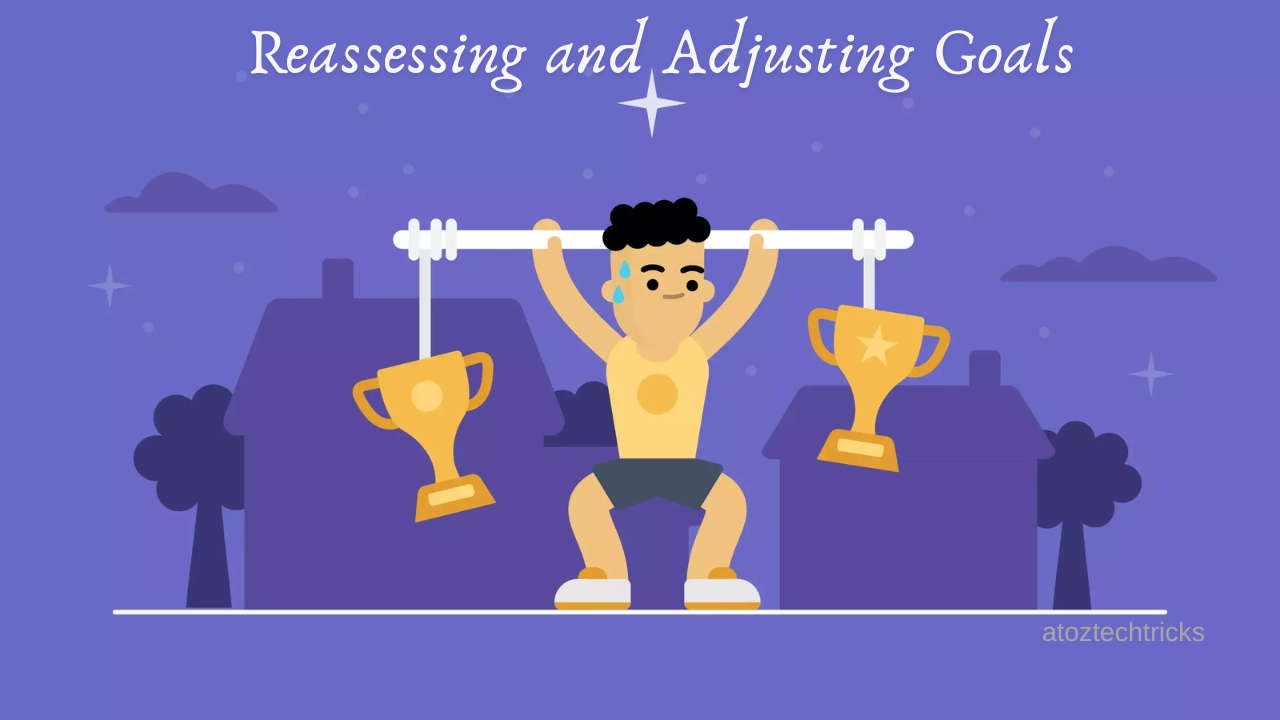Reassessing and Adjusting Goals: A Comprehensive Guide
In the journey of life, setting goals is akin to plotting a course on a map. However, as we navigate through various experiences and circumstances, our initial goals may need to be reassessed and adjusted. Whether you’re pursuing personal development, career advancement, or financial stability, understanding how and when to reassess and adjust your goals is crucial for sustained progress and satisfaction.
The Importance of Reassessing Goals
Why Reassessment is Necessary
- Changing Circumstances: Life is dynamic, and external factors such as changes in the job market, economic conditions, or personal life events can impact your ability to achieve certain goals. Reassessing helps you adapt to these changes effectively.
- Evolving Priorities: As you grow, your values and priorities may shift. What was once a primary goal might become less important, while new goals might emerge. Regular reassessment ensures that your goals align with your current values and aspirations.
- Measuring Progress: Regularly evaluating your progress allows you to identify what’s working and what’s not. It helps you recognize achievements and areas that require more effort, ensuring that your strategies remain effective.
- Maintaining Motivation: When goals are relevant and aligned with your current situation, you’re more likely to stay motivated. Reassessing and adjusting goals can reignite your enthusiasm and commitment.
Steps for Reassessing Your Goals
1. Reflect on Your Current Situation
Before making any adjustments, take time to reflect on your current circumstances. Ask yourself the following questions:
- What have I accomplished so far? Evaluate the progress you’ve made towards your goals. Celebrate successes and recognize any setbacks.
- What challenges have I faced? Identify obstacles that may have hindered your progress. Understanding these challenges can provide insight into necessary adjustments.
- What changes have occurred in my life? Consider personal, professional, or financial changes that might affect your goals. These could include a new job, a move to a different city, or shifts in your personal life.
2. Reassess Your Goals
Once you have a clear understanding of your current situation, reassess your goals using the following steps:
- Evaluate Relevance: Determine if your goals are still relevant to your current priorities. For example, if your career goals have shifted due to a new job opportunity, it might be time to adjust your objectives.
- Check for Realism: Ensure that your goals are realistic given your present circumstances. If you’ve set overly ambitious goals that are no longer feasible, it might be time to revise them.
- Consider Timeframes: Review the deadlines and timeframes associated with your goals. Adjust them if needed to reflect your current pace and availability.
3. Set New Goals
Based on your reassessment, set new or revised goals that align with your current priorities and circumstances. Consider the following when setting new goals:
- Specificity: Ensure your goals are specific and clearly defined. Instead of saying, “I want to improve my fitness,” set a goal like, “I will exercise for 30 minutes, five times a week.”
- Measurability: Establish metrics to measure your progress. For instance, if your goal is to save money, specify the amount you aim to save and by when.
- Achievability: Set goals that are challenging yet attainable. Avoid goals that are too easy or excessively difficult.
- Relevance: Ensure that your goals are aligned with your long-term vision and current priorities.
- Time-bound: Set deadlines to create a sense of urgency and to help track your progress over time.
4. Develop an Action Plan
An effective action plan outlines the steps needed to achieve your goals. Break down your goals into smaller, manageable tasks and establish a timeline for each. For example, if your goal is to start a new business, your action plan might include tasks such as researching the market, creating a business plan, and securing funding.
5. Monitor and Adjust
Regularly monitor your progress and make adjustments as needed. Schedule periodic reviews to assess your progress and make any necessary changes to your action plan. This could involve revising deadlines, altering strategies, or addressing new challenges.
Common Challenges and How to Overcome Them
1. Procrastination
Procrastination can derail your progress and prevent you from achieving your goals. Overcome this challenge by:
- Breaking Tasks into Smaller Steps: Smaller, manageable tasks are less overwhelming and easier to tackle.
- Setting Clear Deadlines: Deadlines create a sense of urgency and help keep you on track.
- Using Productivity Techniques: Techniques like the Pomodoro Technique or time-blocking can enhance focus and productivity.
2. Lack of Motivation
Maintaining motivation can be challenging, especially when facing setbacks. To stay motivated:
- Visualize Success: Regularly remind yourself of the benefits of achieving your goals and how they align with your long-term vision.
- Reward Yourself: Celebrate small victories and milestones to maintain enthusiasm.
- Seek Support: Share your goals with friends, family, or mentors who can provide encouragement and accountability.

3. Overwhelm
Feeling overwhelmed can hinder your ability to make progress. Manage overwhelm by:
- Prioritizing Tasks: Focus on high-priority tasks that contribute directly to your goals.
- Delegating: If possible, delegate tasks to others to lighten your load.
- Practising Self-Care: Ensure you’re taking care of your physical and mental well-being to maintain resilience.
Real-Life Examples of Goal Reassessment
1. Career Change
Consider someone who initially set a goal to climb the corporate ladder in their current field. After several years, they realize their passion lies in a different industry. Reassessing their goals might involve shifting their focus to acquiring new skills, gaining relevant experience, and pursuing opportunities in their desired field.
2. Financial Goals
A person might set a goal to save a certain amount for a down payment on a house. Due to unexpected financial challenges, they reassess their goal and adjust the target amount and timeframe. They might also create a revised budget and explore alternative saving strategies.
3. Personal Development
Imagine someone who set a goal to learn a new language within a year. After six months, they realize that the pace is too fast due to other commitments. They reassess their goal, adjust the timeframe, and modify their study plan to make it more manageable.
Prioritizing Financial Goals: A Comprehensive Guide to Achieving Your Financial Dreams
The Role of Reflection in Goal Adjustment
Reflection is a crucial component of goal reassessment. Regularly taking time to evaluate your progress and experiences allows you to gain insights and make informed adjustments. Consider keeping a journal to document your thoughts, challenges, and achievements. This reflective practice can provide clarity and help guide your decision-making process.

Reassessing and adjusting goals is an ongoing process that ensures your objectives remain relevant and achievable. By regularly evaluating your goals, setting new ones, and developing actionable plans, you can navigate life’s changes with confidence and continue making meaningful progress. Embrace the flexibility to adapt and grow, and remember that achieving your goals is a journey, not a destination.




Post Comment